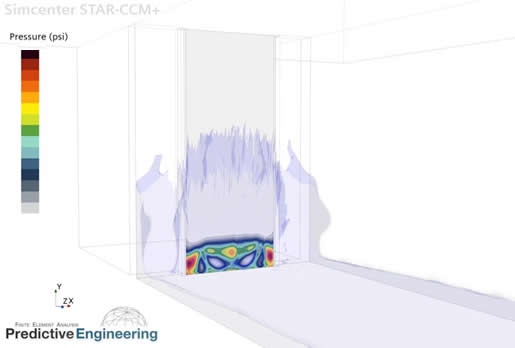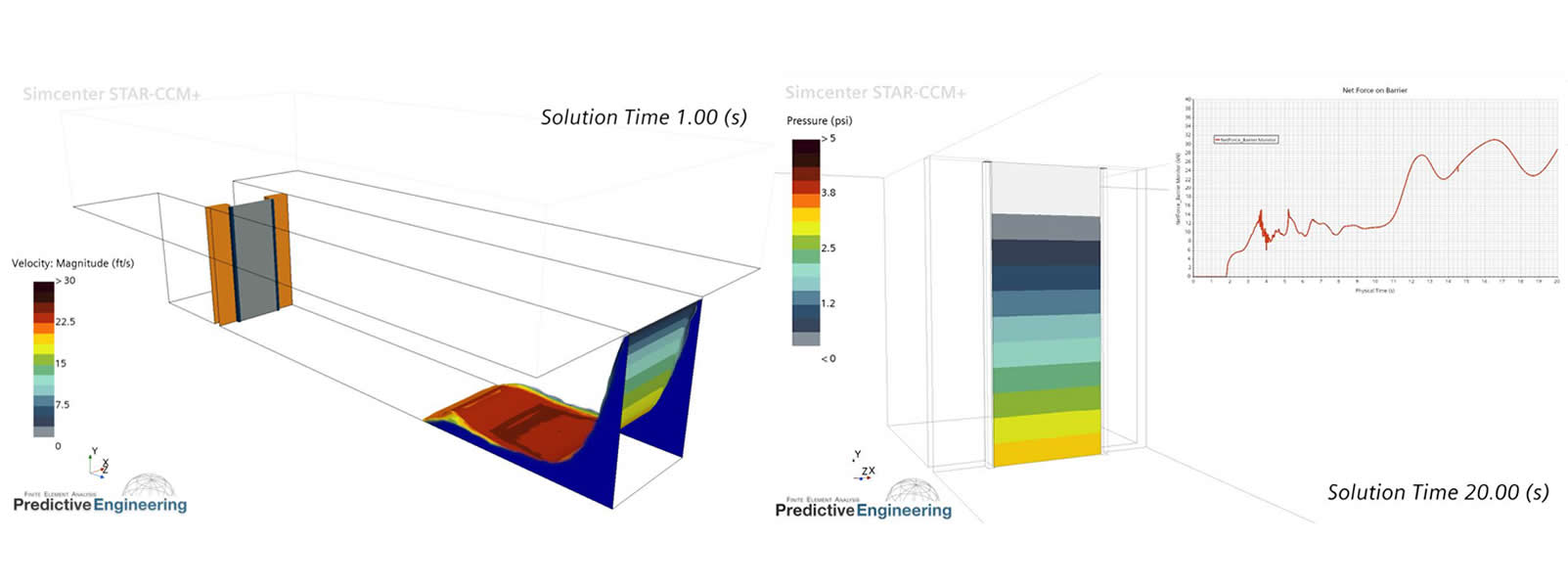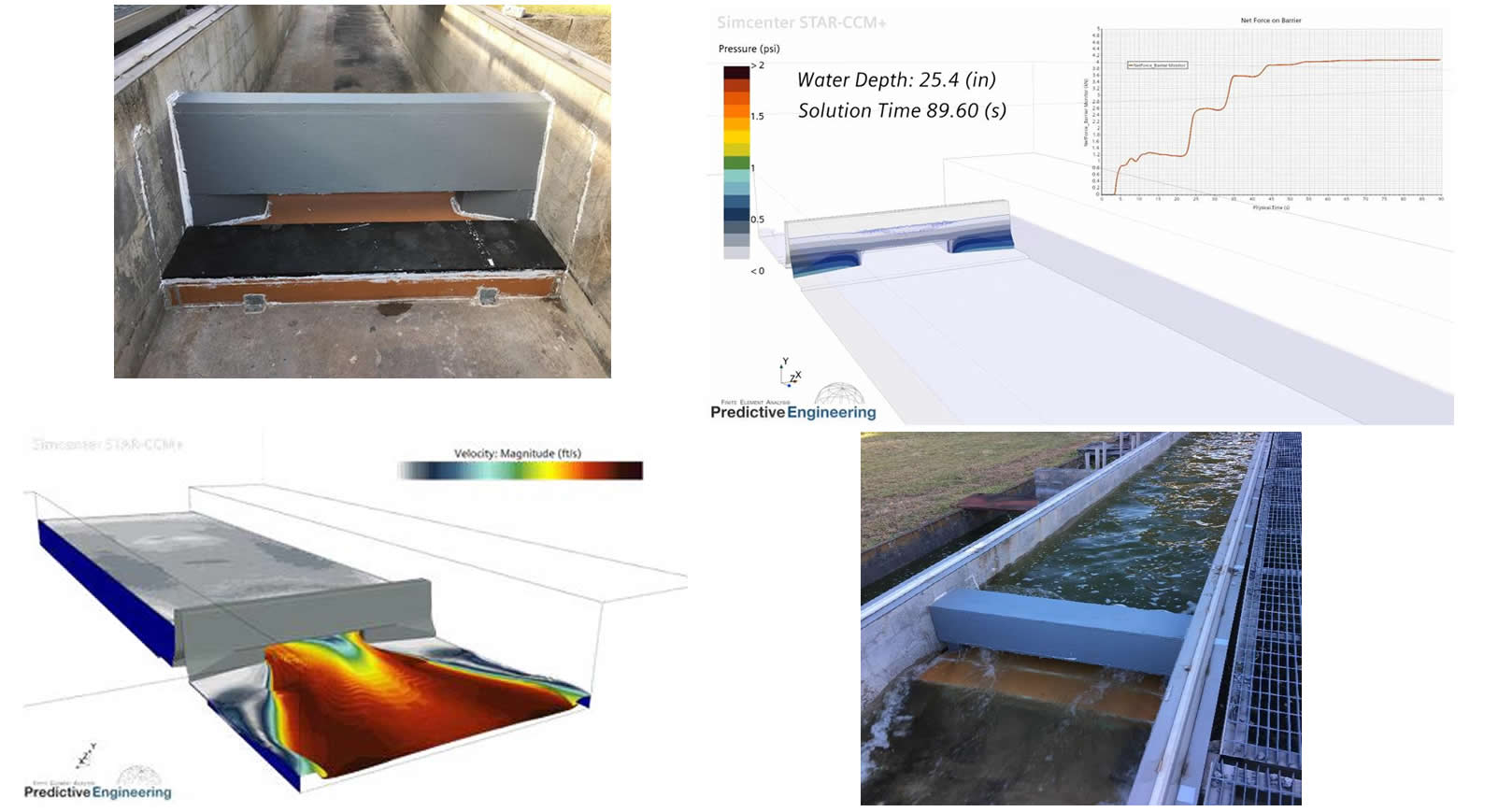Flood Barrier Analysis with CFD

Analysis
Objective
Climate change is intensifying storms and increasing rainfall in certain regions, heightening the risk of flash flooding. To ensure structural safety, professionals in building, civil, and transportation engineering must carefully consider the impact of water loading on their constructions. Recently, Predictive Engineering worked with our client who specializes is developing lightweight and easy to deploy flood barriers. For constant loading, or hydrostatic cases, determi ning the load on a structure is straight forward and can be done with a hand calculation. In real life, flood waters are dynamic, and the initial in-rush of water poses a critical test for any barrier structure. Accurate calculation of these loads requires Computational Fluid Dynamics (CFD).
To simulate water inrush, we use the Volume of Fluid (VOF) model in Simcenter STAR-CCM+ to create a digital twin of the barrier test. The VOF method is multiphase CFD model that allows us to simulate two immiscible fluids, in this case air and water. With this technique, we can capture the free surface of the water as it falls and accelerates towards the intended target. We map the impact loads from the water impact to a Finite Element Model (FEM) to perform stress analysis and verify that the barrier is sufficient to handle the surge. The primary advantage of this digital testing approach lies in its flexibility—allowing for easy adjustment of the size and shape of the test article—a feat that is not cost-effective in real-world testing scenarios. Beyond flood control barriers, these techniques hold promise for application in transportation barriers and submersible structures, extending their potential impact across various domains.

Flood Barrier Analysis with CFD



